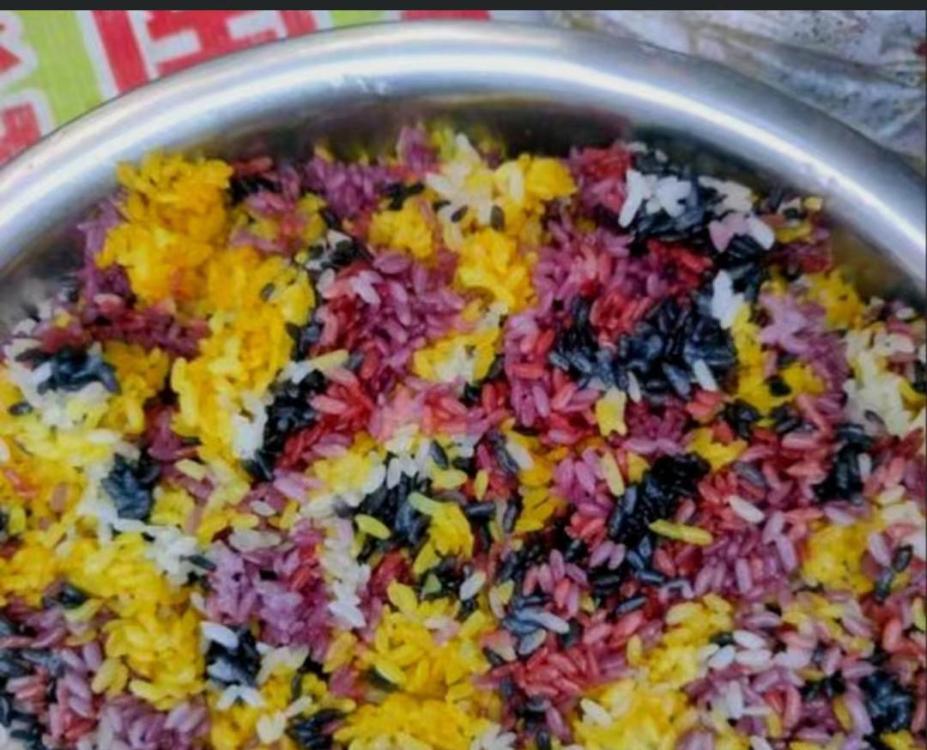7. 糯米 (nuò mǐ)
As in the rest of southern China, the staple food in Guangxi is rice (Northern China tends more to wheat.) So, you will find that the majority of noodles here are rice noodles (米粉 - mǐ fěn*), although we can buy wheat noodles, too. The standard expression 你吃饭了吗 (nǐ chī fàn le ma), literally meaning ‘have you eaten rice’ is used as a greeting – it isn’t an invitation to dinner. Nor are you expected to answer with a list of what you have eaten in the last 24 hours, any more than "how are you?" is an invitation to list every disease you have ever suffered or imagined suffering.
The ethnic minorities, including the Zhuang and especially the Miao, Dong, Yao, Mulam, Maonan etc favour 糯米 (nuò mǐ) which is glutinous rice, also known as ‘sticky rice’. Like all rice, glutinous rice contains two starches: amylose and amylopectin in varying proportions. Glutinous rice contains higher amounts of amylopectin which gives it its glue-like nature.
NOTE: Rice, sticky or glutinous or otherwise does not contain gluten! The names are similar simply because gluten is also sticky. So is maple syrup but I don’t see people avoiding that! Celiac people can eat rice without fear!
Contrary to much of the wisdom on the internet, glutinous rice comes in both long and short grain types, although the latter is much more common.
As well as being a staple, eaten with every meal, glutinous rice is used in festivities and at weddings etc. The dish below, 五色糯米饭 (wǔ sè nuò mǐ fàn) – 5-colour glutinous rice - is a favourite at festivals. Some of the rice is coloured using vegetable dyes; some (purple and red) are natural. I first ate it at a wedding in a Dong village near Liuzhou city.
The glutinous rice is also used to make rice wine with which to prolong the celebrations! It is also used in the manufacture of Shaoxing wine, etc.
* 米粉 - mǐ fěn is often mistranslated by computer translation systems as 'rice powder'. It is true that 粉 (fěn) can mean powder, here it is refering to powdered rice (i.e. rice flour) which is used to make the noodles, so 米粉 is kind of an abbreviation.



